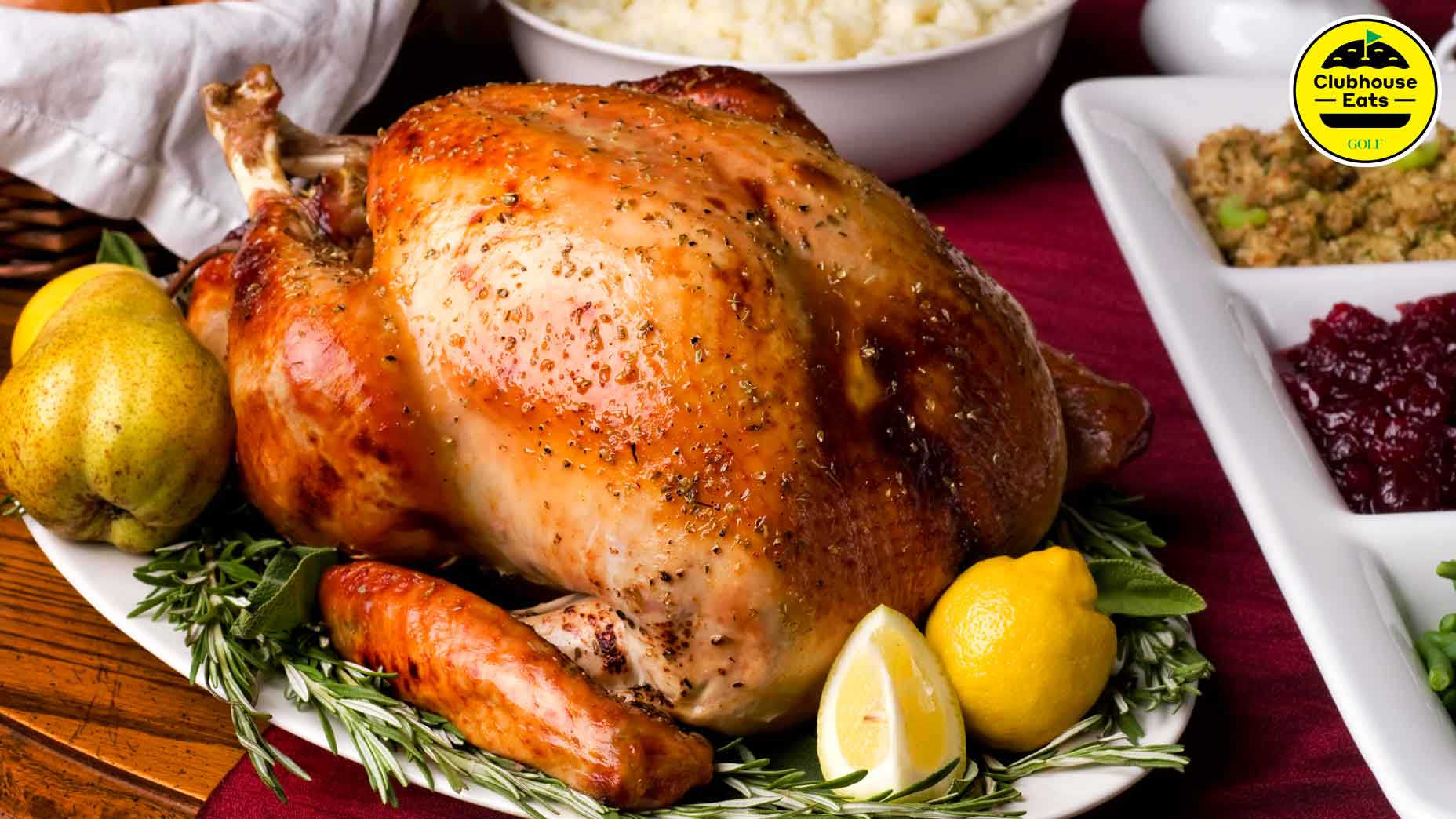
Contrary to tradition, it’s not best-practice to roast a turkey whole.
Getty Images
Welcome to Clubhouse Eats, where we celebrate the game’s most delectable food and drink. Hope you brought your appetites.
***
Now’s around the time of a year when one lucky turkey gets a presidential pardon, and countless others suffer the unspeakable indignity of being transformed into dry and flavorless Thanksgiving meals.
It’s no one’s fault, really.
Certainly not the turkey’s.
Not ours, either.
A turkey, after all, is a tricky bird to cook, at least in the manner that most of us have been taught to prepare it.
Roasting the dang thing whole? That’s often a recipe for disaster.
Because the breasts cook faster than the legs, the light meat tends to dry out before the dark meat has finished cooking.
Yes, brining can help.
But David Kinch suggests you take it a step further.
Kinch is a golf enthusiast. He’s also the chef and owner Manresa, a three-Michelin star restaurant in Los Gatos, Calif.
When Kinch cooks a turkey, he does what a golf instructor does with a swing: He breaks it down. Then he cooks it in parts.
We asked Kinch to run through the basics and the benefits they bring.
1. Breaking Down the Bird
This is not high science. All you need is a good knife and a cutting board (and, should you want some guidance, a video like this). You can also save yourself the labor and the cleanup by asking your butcher to do it for you.
2. Brining
This step requires a bit of advance planning (then again, doesn’t everything around Thanksgiving?) but it’s worth it, as it helps the meat retain moisture as it cooks. For his brine, Kinch keeps it straightforward: For every liter of water (he’s a classically trained chef; he uses the metric system), he adds 50 grams of salt, and 50 grams of brown sugar. He also adds a cup of bourbon. “I actually picked that one up from Martha Stewart and I love it,” he says. “It adds a classic American flavor.” Kinch recommends brining for around 12 hours, and for no more than 18 hours.
3. Air-drying
Remove the turkey parts from the brine, pat them dry and leave overnight in the refrigerator. The drier you get the skin, the better it will crisp up.
3. Roasting the Breasts
Smear the outside with softened butter, sprinkle generously with salt and pepper, put them in a pan with onions and potatoes, and roast at 350 degrees until the juices run clear. Then crank the oven to 450 degrees to bronze the skin.
4. Braising the Legs and Wings
Brown the pieces, then braise them in chicken stock, with onions, bay leaves and other aromatics until the meat is falling off the bone. Along with succulent legs and wings, you’ll also wind up with a cooking liquid that you can use to make what Kinch describes as “gravy on steroids.”
5. And a Bonus
Your leftovers will be in the form of a ready meal, not a messy carcass.








